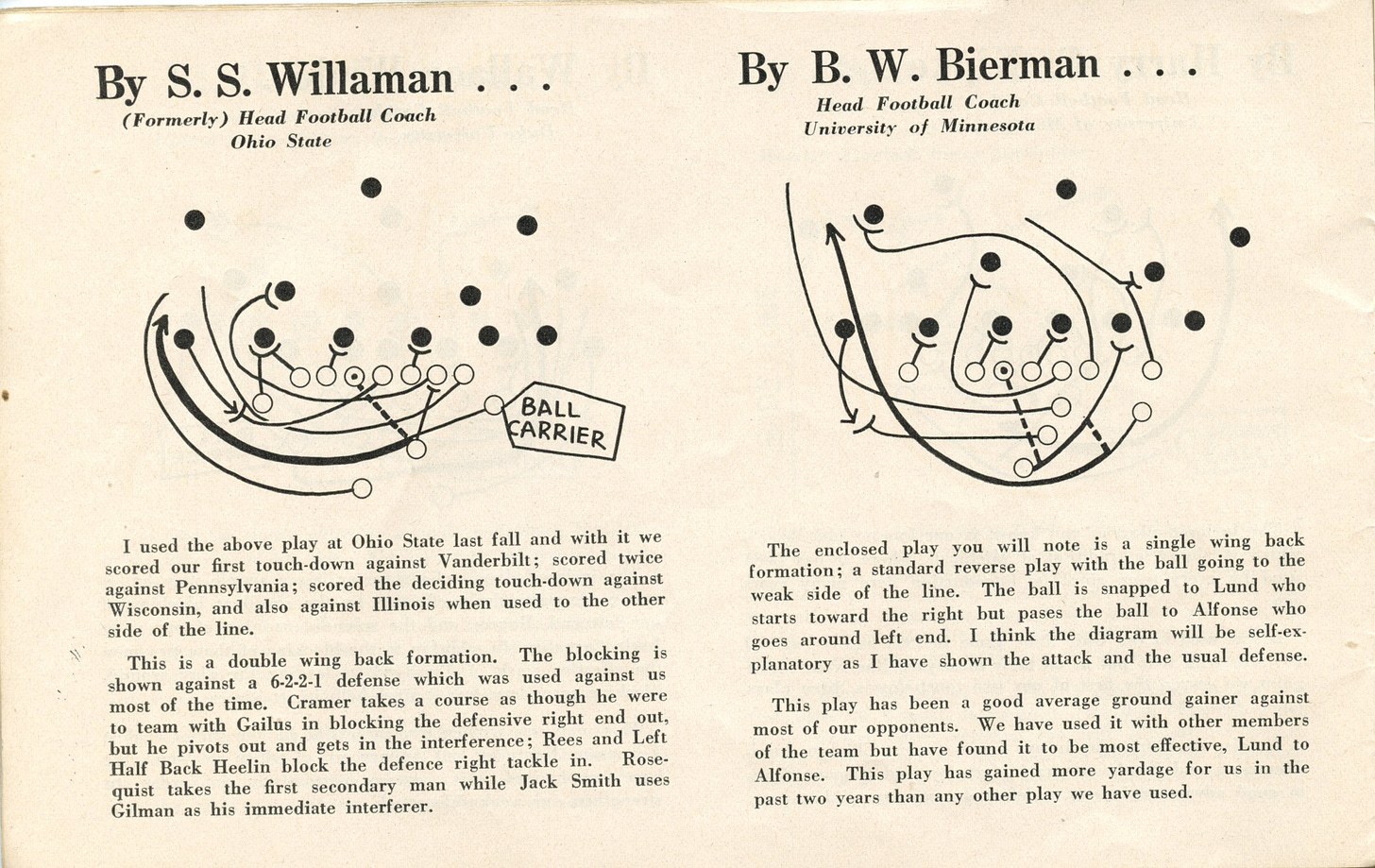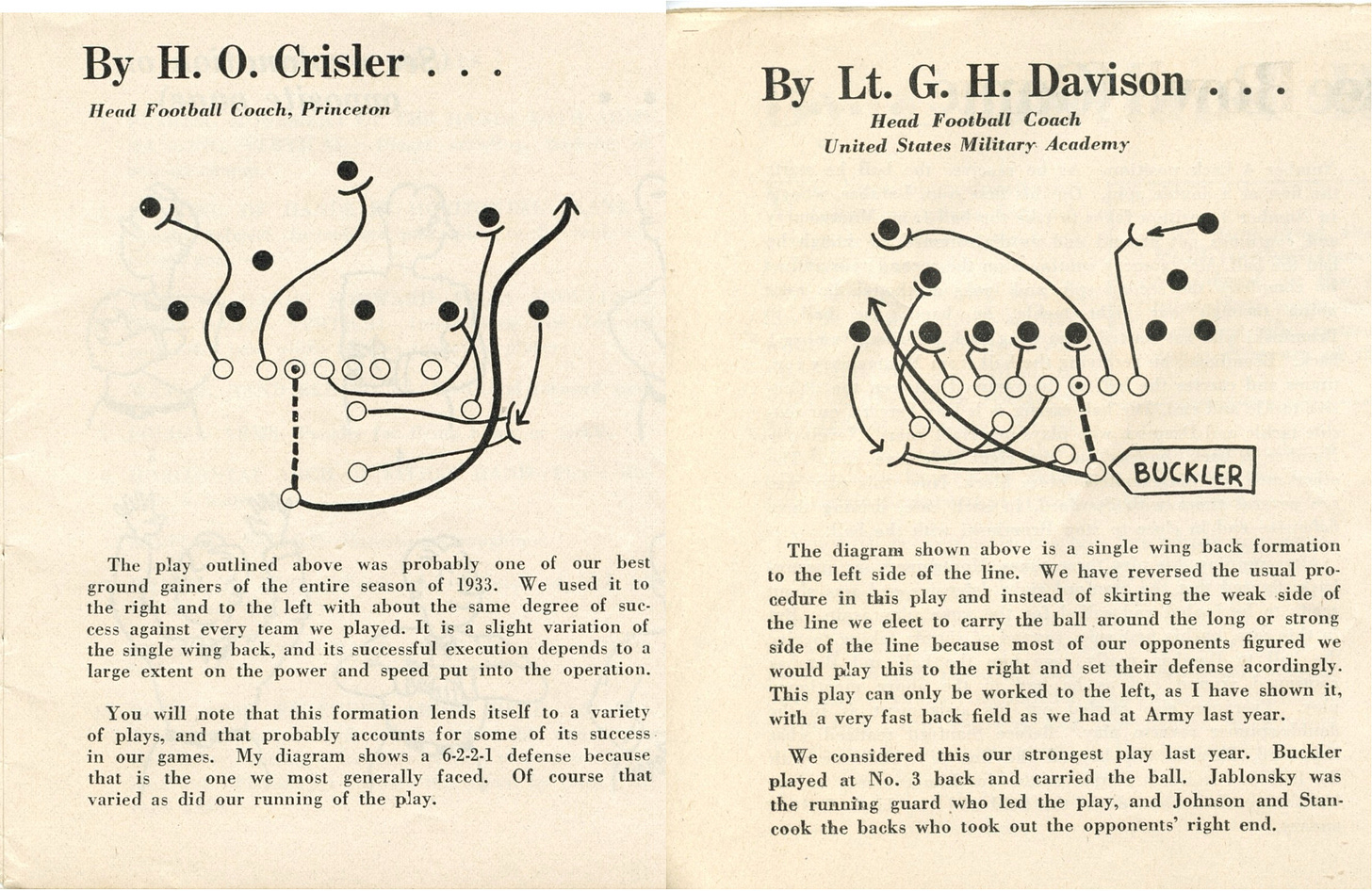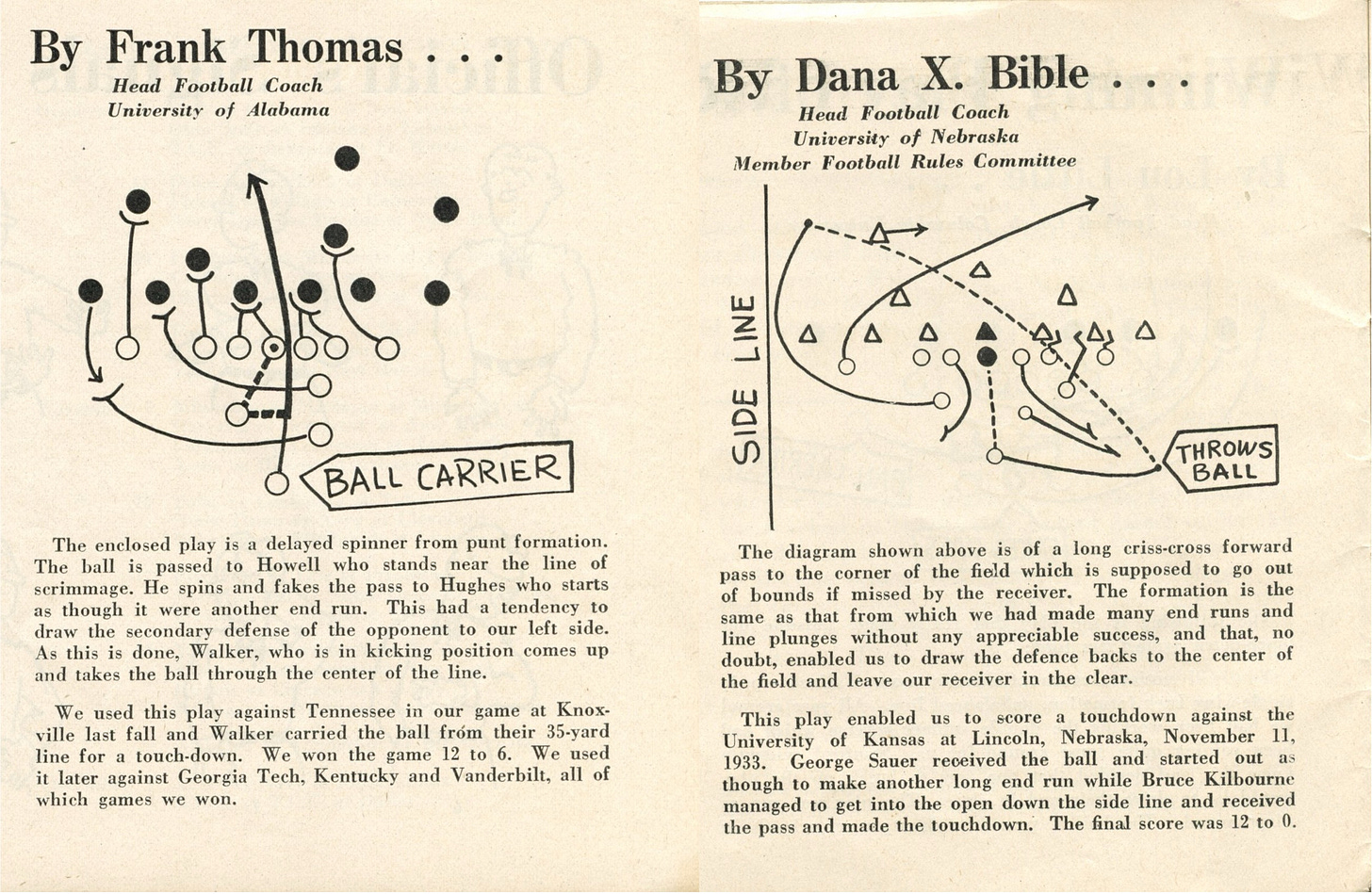Today's Tidbit... Top Plays of 1933
Grantland Rice gave his name to a Cities Service Football Guide over a 20-year period beginning in 1933, with a number of them including useful plays offered by top coaches.
The plays in the brochure do not include detailed descriptions of blocking assignments and backfield movements but provide a solid sense of the design. The 1930s saw most offenses run from the Single Wing, Double Wing, or Short Punt formations with both ends within three yards of the tackles.
The 1934 edition included nine plays, all being slow developing with lots of players running parallel to the LOS compared to everything that followed the Modern T formation's arrival in 1940. Offensive players could not use their hands or arms when blocking then so the plays required misdirection and crab blocking to slow the defense and stop the penetration of the six or seven players on the line of scrimmage.
The first two plays are run from unbalanced formations. Some backfield spinning or misdirection precede sweeps to the weak side run by a wing or slot. In both cases, the runners are led by two or three backside linemen or backs.
The next two plays show more of the same. One is snapped to an upback in a short punt formation and the other is a reverse following an off tackle look.
Surprise. Surprise. We see two more sweeps, both running to the strong side with kickout blocks on the defensive ends.
Steady doses of sweeping or reversing around the end allow the offense to fake a sweep and execute a delayed run up the middle. The delay provides an effect similar to a draw play, which did not yet exist. Our only pass play of the bunch fakes a sweep to the strong side, with the fullback throwing to the backside wheel route after the left end’s crossing pattern clears the safety.
Perhaps the slowest-developing play is Columbia’s Rose Bowl winner that required a double spin move by Cliff Montgomery, their star. They set up the winning play by faking the pass (now called a handoff) to one back and giving it to the wing several times before giving it to the first back for the game-winning run.
Each play required considerable practice time to hone the movements in the line and backfield, and that practice time appears to have been worth it since the coaches cited them as among their top plays of 1933.
Football Archaeology is reader-supported. Click here to buy one of my books or otherwise support the site.







